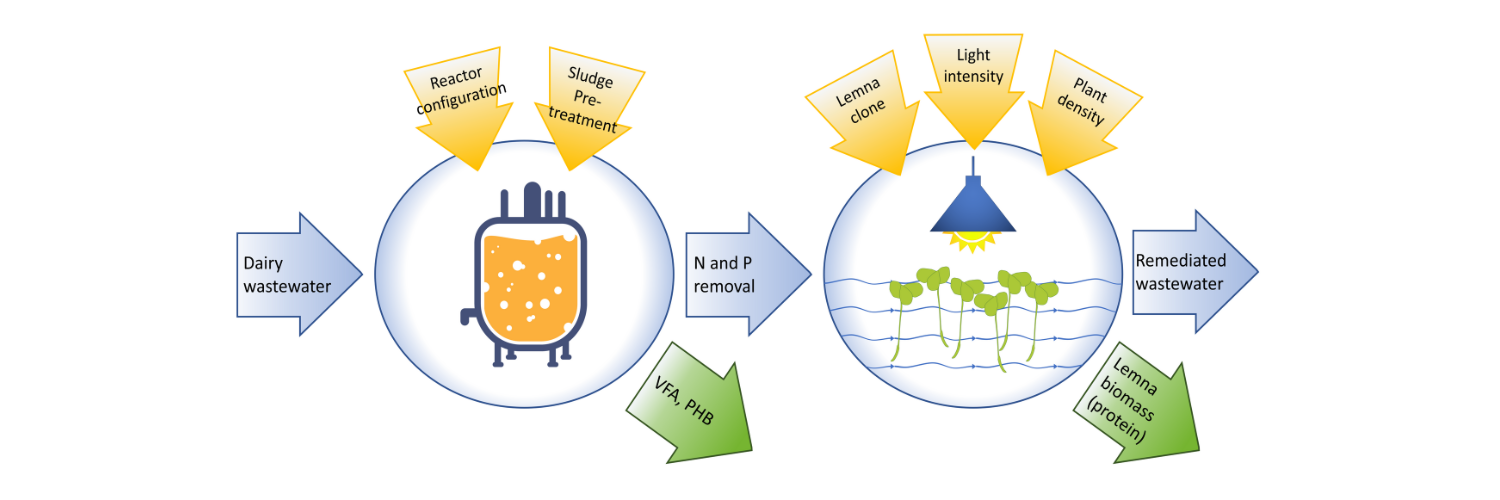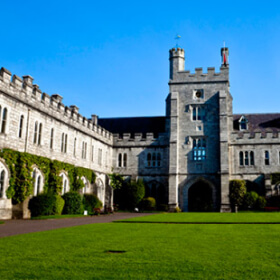Going solo or teamwork
Duckweed has been demonstrated to effectively remove plant nutrients from water. Especially uptake of nitrogen and phosphorus is rapid, but metals and some organic pollutants are similarly taken up. However, when wastewaters contain large amounts of organic pollutants, such as sugars, lipids or oils, duckweed species are not particularly effective remediators. And unfortunately, many wastewaters from the agri-feed industry contain large amounts of organic pollutants. For example, dairy processing wastewater (from making cheese, yoghurt, milk powder and so on) tends to be rich in the sugar lactose. So, does this preclude the use of duckweed species for remediation and valorisation approaches? The answer is a resounding “NO”. Rather than exploiting duckweed on its own, a cascading system needs to be developed whereby multiple species contribute to wastewater valorisation. Newtrients project logo.
Newtrients project logo.
In the case of dairy processing wastewater, the NewTrients project at University College Cork has shown that acidogenic bacteria can effectively convert lactose in volatile fatty acids (VFA) and polyhydroxyalkanoates (PHA). The latter are an important feedstock for the production of bioplastics. The resulting wastewater is lactose free, but still rich in nitrogen and phosphorus. Thus, duckweed can be used in a second stage, to produce protein-rich biomass. Using this two-step process generates new opportunities for rural industries to develop commercial products (e.g. plastics and animal feeds) on what was previously perceived as useless wastewater.

Above: Schematic representation indicating the collaborative process of microbial action and duckweed growth to remediate dairy processing wastewater.
As part of the Duck-Feed project, the team is now moving on to pioneer duckweed growth, remediation and valorisation of different wastewaters from farms and food-processing companies. For example, slaughterhouse waste is first subjected to microbial degradation followed by duckweed-based valorisation of the remaining nitrogen- and phosphorus-rich wastewater.
O’Mahoney, R., Coughlan, N.E., Walsh, É. and Jansen, M.A.K, 2022. Cultivation of Lemna minor on industry-derived, anaerobically digested, dairy processing wastewater. Plants, 11(22), p.3027.
Walsh, É., Margassery, L.M., Rodriguez-Sanchez, A., Wall, D., Bolger, P., Jansen, M.A.K. and O'Leary, N., 2024. Integration of microbial bioreactors and Lemna minor cultivation for sustainable treatment of dairy processing wastewater. Journal of Water Process Engineering, 67, p.106290.


